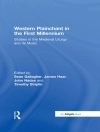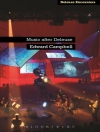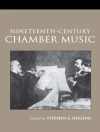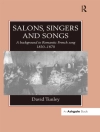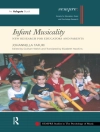In this erudite and elegantly composed argument, Karol Berger uses the works of Monteverdi, Bach, Mozart, and Beethoven to support two groundbreaking claims: first, that it was only in the later eighteenth century that music began to take the flow of time from the past to the future seriously; second, that this change in the structure of musical time was an aspect of a larger transformation in the way educated Europeans began to imagine and think about time with the onset of modernity, a part of a shift from the premodern Christian outlook to the modern post-Christian worldview. Until this historical moment, as Berger illustrates in his analysis of Bach’s St. Matthew Passion, music was simply ‘in time.’ Its successive events unfolded one after another, but the distinction between past and future, earlier and later, was not central to the way the music was experienced and understood. But after the shift, as he finds in looking at Mozart’s
Don Giovanni, the experience of linear time is transformed into music’s essential subject matter; the cycle of time unbends and becomes an arrow. Berger complements these musical case studies with a rich survey of the philosophical, theological, and literary trends influencing artists during this period.
Jadual kandungan
List of Illustrations
Introduction
PRELUDE.
L’Orfeo, or the Anxiety of the Moderns
PART I. BACH’S CYCLE
1. The Arrested Procession
Appendix: St. Matthew Passion, opening chorus, full score
2. A Crystal Flying Like a Bullet
3. There Is No Time Like God’s Time
INTERLUDE. Jean-Jacques contra Augustinum: A Little Treatise on Moral-Political Theology
Augustine
The Birth of Autonomy
Rousseau
The Christian and Modern Outlooks Compared
The Emancipation of Time
From Cosmos to History
PART II. MOZART’S ARROW
4. Mozart at Play
5. The Hidden Center
6. Between Incoherence and Inauthenticity: Don Giovanni and Faust
7.
Die Zauberflöte, or the Self-Assertion of the Moderns
POSTLUDE. Between Utopia and Melancholy: Beethoven and the Aesthetic State
Acknowledgments
Notes
Works Cited
Index
Mengenai Pengarang
Karol Berger is the Osgood Hooker Professor in Fine Arts at Stanford University. His books include A Theory of Art (2000) .


